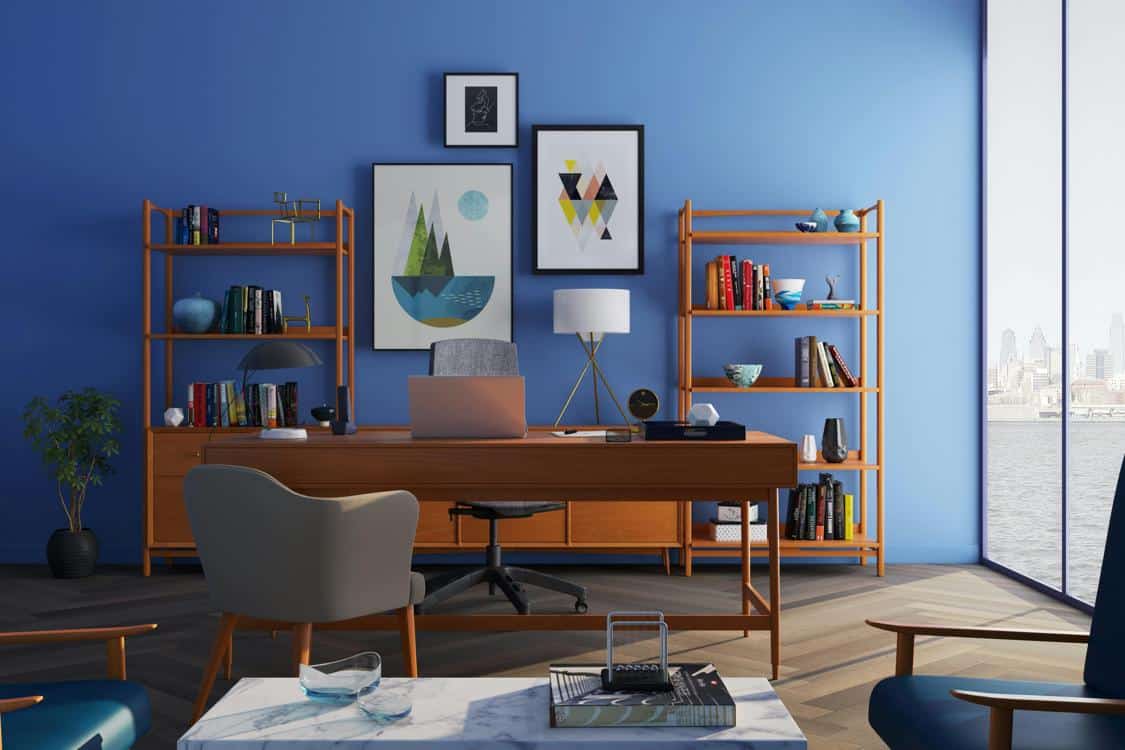With fewer walls, open-plan living allows for more space in the home. This can be especially useful for those who entertain regularly.
But if you’re always cooking or doing the washing, it might be tricky to keep those smells from travelling into your living room and detracting from your enjoyment of your space.
1. It’s a great way to make the most of your space
Having no walls separating rooms, open-plan living can give you the feeling of a more spacious home. And this space can be used for a variety of purposes, making it the perfect solution for a growing family or sociable couple who love to entertain.
When you open up a room, it can also allow more light to flow through the space, which in turn can create a brighter and more airy interior. This can be especially helpful if your home doesn’t have many windows, or if you’re looking to maximise the amount of natural light that comes into your property.
If you do choose to go with an open-plan layout, it’s important to think carefully about how each room is going to work as a whole and what you want it to look like. For example, it’s a good idea to add some visual definition between the kitchen, dining and living spaces with a statement cabinet or bookcase. This can help to separate the areas without blocking the view or stealing valuable floor space, and it can also add extra storage.
It’s also important to consider the noise and echoes that can be created in an open-plan space, especially if you have high ceilings. However, it’s possible to limit these issues with the right furniture placement and by adding rugs, thick curtains or upholstered walls. You can also try to create a focal point in the room that acts as a buffer and helps define the different functions, such as a fireplace or TV, which can help to reduce unwanted noise or echoes.
Another benefit of open-plan living is that it can make the process of entertaining guests much easier. It means that you can spend more time chatting to your guests while you’re cooking and eating, or even while you’re doing the dishes! This can be especially helpful if you have children, as it can help you keep an eye on them while they’re playing in the living area or kitchen.
Finally, if you’re thinking about selling your home in the future, an open-plan design can be a great way to add value. Potential buyers will be impressed by the sense of space and light that an open-plan design can provide, which can often make a house feel bigger and more luxurious than a traditional one-room layout.
2. It’s a great way to create a sense of flow
From helping the kids with homework while you prepare dinner to chatting to your partner over cocktails while watching a film, open-plan living makes it easier than ever to spend time together, says one expert from Blokk Studio. The fact that multiple activities can take place in the same room means everyone is able to do what they need to without worrying about disrupting others – perfect for busy parents and couples who share household duties!
Fewer walls also means you can create larger rooms that are perfect for entertaining. You can fit a bigger dining table to seat the whole family or host a cosy couples’ dinner with ease and even choose bi-folds doors to open your home up to the garden for the ultimate summer party pad.
Open-plan living also encourages sociable living as it means that your home is a social hub where you can easily entertain guests and be around for each other’s events. In a recent informal poll, we asked Houzzers across the world whether they prefer a closed or open-plan layout and found that the majority of people favoured an open-plan design.
Choosing the right furniture for your open-plan space is key to creating different zones that are practical and functional. The innate openness of these types of layouts means that any clutter is on show, so choosing storage solutions that hide away clutter and create a clean, crisp look will help to regulate the space. Clever storage units and feature walls are a great way to give your open-plan living a sense of structure while maintaining a flow of style throughout the room.
One downside of open plan living is that noise can travel more freely, which can be a problem if you’re trying to relax and watch a film but can hear your partner clearing up the dishes or the kids fighting in another part of the house. Adding in partial walls or sensible placing of furniture can help to block off the sound of activity from other areas, which is something that we can advise on when you’re working with us to design your dream home.
3. It’s a great way to create a sense of privacy

With open-plan living, the kitchen, dining and living spaces become one large social space – which is ideal for families who love to entertain. It means that you can keep an eye on kids in the living room whilst preparing dinner and chatting to your friends in the kitchen. This is particularly great for parents, as it means that you can be more involved with your children’s homework and social activities, without having to leave the room to cook or clean!
However, it’s important to remember that open-plan areas can be challenging when it comes to privacy. After all, with no walls to separate you from your neighbours it’s easier for noise to travel from one area to another. This can be a problem for many people, especially those who want to have a quiet space at home where they can read a book or work on their computer. However, if you are careful with your furniture arrangements it is possible to create a sense of privacy in an open-plan layout. Using floor rugs, taller pieces of furniture (such as a statement cabinet) and lighting can all help to define your spaces and create a more private feel.
Another way to create a sense of privacy is by introducing natural materials into your spaces. Wood and stone are both great choices as they naturally create a warm, intimate atmosphere. They can also be used to add contrast and highlight specific parts of your space, giving it more character.
One of the best ways to use these materials is by installing a feature wall in your kitchen or dining room. This is a great way to add some personality and character to your space, and it can be a great focal point for your home. It’s also a great idea to incorporate these materials into your décor, such as by incorporating wooden features in your furnishings or by adding some stone wall art to your walls.
One of the best things about open-plan living is that it’s easy to make your home feel stylish and streamlined. By choosing a palette of neutral colours and then injecting your own style with accessories and furnishings, it’s easy to create a home that feels stylish and unique. Plus, with open-plan living, you can easily change the way your home looks at any time – simply by moving your furniture around!
4. It’s a great way to add value to your home
Open-plan living offers a variety of benefits that are sure to attract potential home buyers. It helps to create a more spacious and unified space, improves social interaction, provides more flexibility, and can add value to your home.
The lack of walls allows the natural light from one room to flow into another, bringing in a refreshing feel. This can make the rooms feel bigger and more welcoming, especially in darker times of year. Additionally, it’s a great way to increase the amount of natural light in your home, which can help to reduce energy bills and improve health.
Having open-plan living also makes it easier to keep an eye on kids. This can be a real bonus for busy parents who need to cook or clean but want to be close enough to help them with homework or other activities. And, if you love to entertain guests, open plan living means that you can easily supervise your guests from different areas of the house.
However, if you find yourself feeling distracted or overwhelmed by the constant connection between spaces, there are ways to mitigate this. The key is to create viable zones with sensible layouts and clever use of furniture, explains Siketa. This can be done by introducing subtle signifiers to define the separate spaces, such as room separators, a simple rug, or a feature wall.
It’s important to note that the absence of walls can mean that noise or smells can travel more easily between areas. This can be an issue if you live with others or have young children, but this is something that can easily be remedied by talking to your architect about the use of space from the outset and choosing appliances and acoustic curtains that will help to limit this impact.
If you’re thinking about renovating your home, or just starting out and looking to make the most of your space, consider open-plan living. It can be a fantastic way to increase your living space, improve social interaction and entertainment opportunities, add value to your property, and make your home a more enjoyable place to live.
